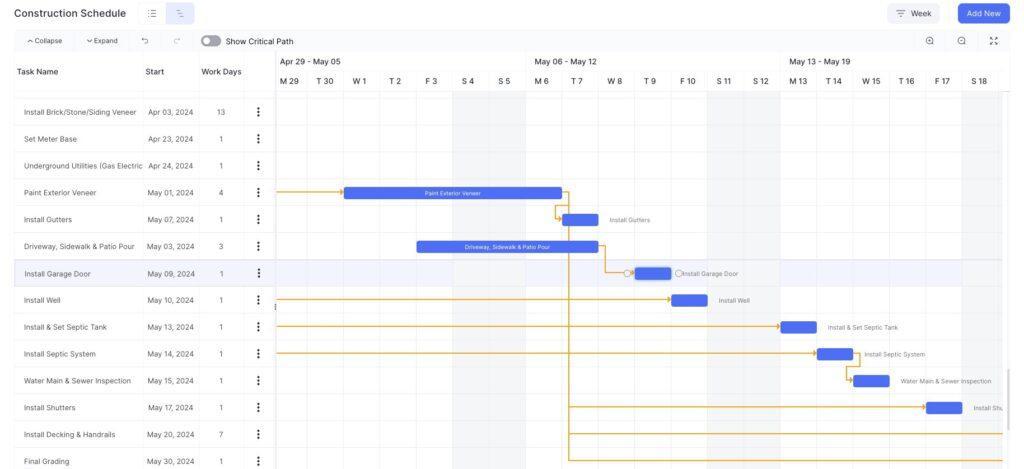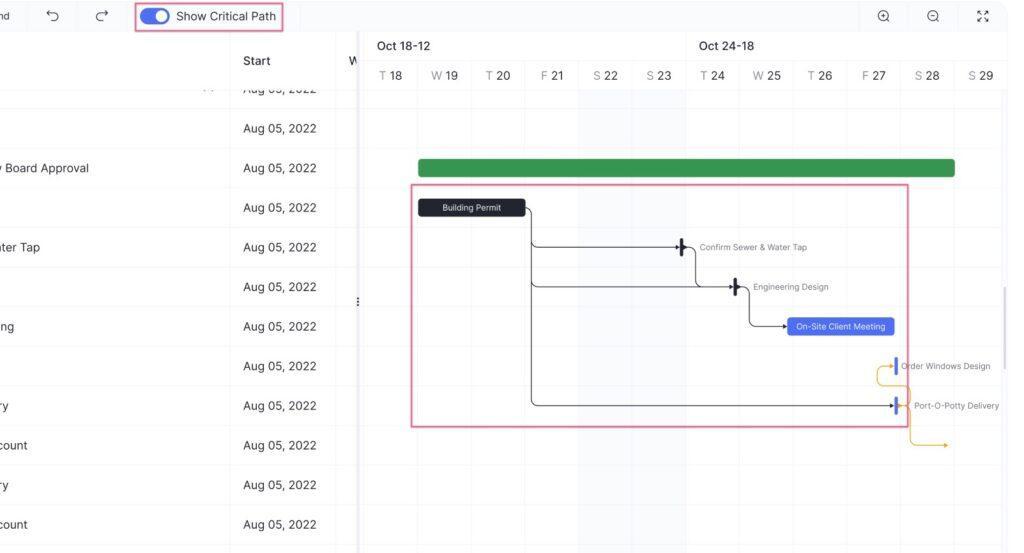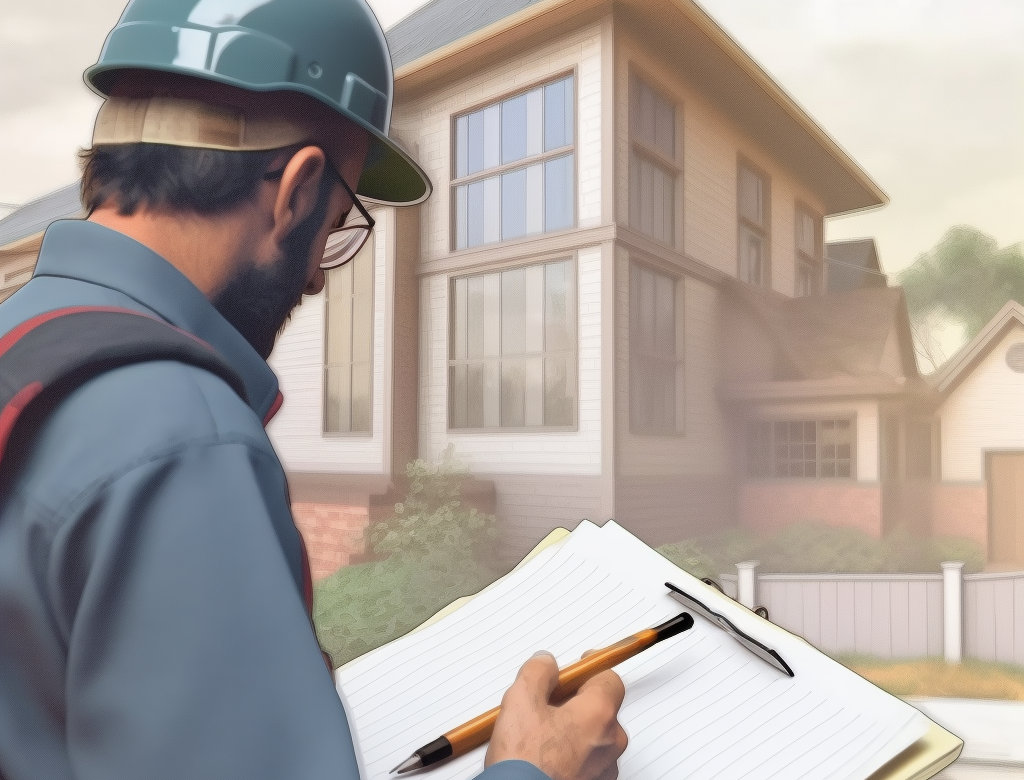Gantt charts are essential for managing the home construction process because they provide a visual timeline of the entire project. Gantt charts are invaluable tools that enable you to plan, manage, and track the progress of your home construction project. They are especially effective for larger projects, as they can easily show which tasks are dependent on one another, how long each task will take, and any potential delays.
A Gantt chart is a graphical representation of a project timeline, usually in the form of a bar chart. Here is a quick example from inside our construction scheduling feature.

The chart lists all of the tasks that need to be completed for the entire project, and it shows how these tasks are related and how long each task will take to complete. With a Gantt chart, you can clearly see when tasks need to be completed in order to stay on schedule. You can also identify potential problems and bottlenecks before they become issues.
Gantt charts are also great for helping you visualize the progress of your project. You can easily see which tasks are completed and which tasks are still pending. This allows you to quickly make adjustments to the timeline if needed.
What is Critical Path?
A critical aspect of using Gantt charts effectively in the home construction process is understanding and managing the project’s “critical path.”
The critical path is a sequence of dependent tasks that directly impact the project’s completion date. It’s the longest stretch of dependent activities and has zero scheduling flexibility.
As you’ll see, when Critical Path is toggled on, it highlights the path in black.

In other words, if there’s a delay in one of the tasks on the critical path, it will delay the entire project. Recognizing the critical path allows you to prioritize tasks, assign resources strategically, and anticipate potential delays more effectively. It’s a vital tool for maintaining efficiency and ensuring the project stays on track.
Gantt for Communication
Gantt charts are also great for communicating with your team.
They provide a clear overview of the project timeline and make it easy for everyone to stay on the same page. With a Gantt chart, everyone can easily see which tasks are completed and which tasks are still pending. This makes it easier to coordinate tasks and keep everyone informed of progress.
Avoid Potential Delays
Finally, Gantt charts can help you identify potential risks in the project. By looking at the timeline, you can quickly spot any areas that could cause delays or problems. This allows you to take proactive steps to minimize any potential risks.
In summary, the importance of Gantt charts in home construction management cannot be overstated. These visual timelines offer a clear roadmap of the project, streamline the tracking of progress, and play a vital role in spotting potential risks.
BuilderPad recognizes these benefits and has integrated Gantt chart visualization into its construction management software. Our platform leverages this tool to amplify efficiency and minimize the likelihood of construction delays.
With BuilderPad and Gantt charts combined, you’re empowered with the necessary insights to stay ahead of your projects and consistently meet schedules.







